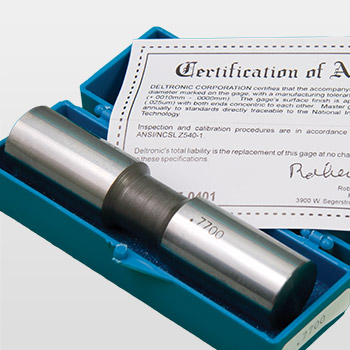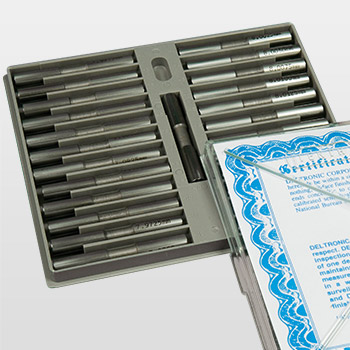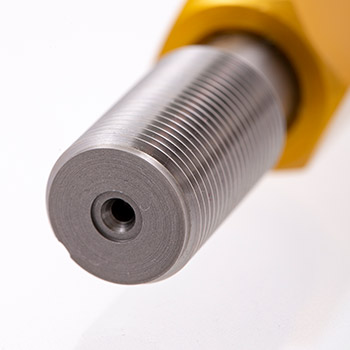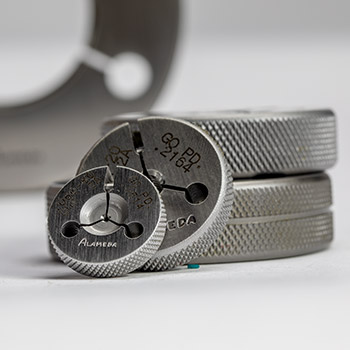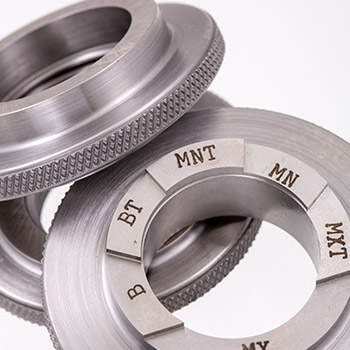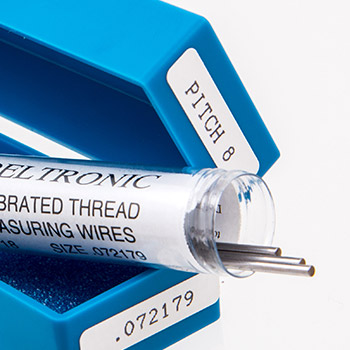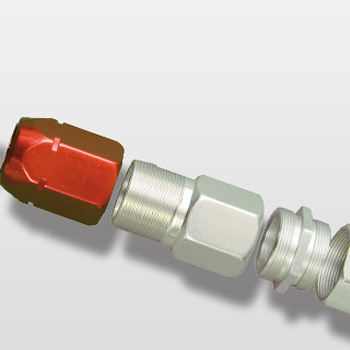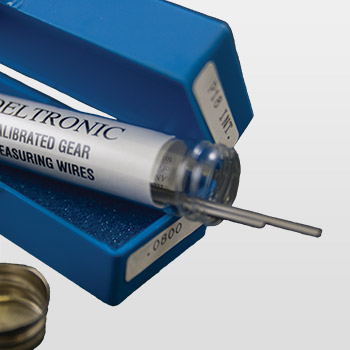How to Use
Below are best practice overviews about how to most effectively use Deltronic and Alameda gages. If you have any further questions, please contact us or your local distributor.
The greatest wear on thread plug gages occurs on the ends of the members. It is therefore advisable to consider the use of a reversible gage which has two gaging ends on each member and may be reversed in the handle when one end is worn. The initial cost of this type of gage is greater than the initial cost of a taperlock gage, but the per piece gaging cost may be lower if a large number of parts are to be checked. There are some disadvantages to a reversible type gage that should be considered.
The handles are somewhat more cumbersome than a taperlock handle and it is more difficult to secure the members against turning in the handle; the smaller sizes are marked with the pitch diameter and nominal size on the handle only; the Go and No Go members are of the same length. For these reasons,extra care must be taken when using reversible gages.

The most commonly used Go and Not Go thread plug gages are of taperlock design. They are easy to use and there is no possibility of using the wrong gage since each member is marked with the size and pitch diameter. They can also be identified by a visual check since the Go member is longer than the No Go member.

The setting plug checks the pitch diameter of the ring and contacts the flanks of the thread to the maximum major diameter of the screw. The major beyond this is to be cleared in the ring. As a positive check on this, modern practice is to use the truncated type setting plug in which a portion of the major diameter has been reduced or truncated.
In use, the thread ring gage is set to fit the pitch diameter on the truncated portion of the plug, then carefully screwed over the full form portion. If the ring gage has proper clearance in the major diameter, there will be little or no difference in the feel of the ring as it passes from one section of the plug to the other.

Go and No Go thread ring gages are the application of the “virtual diameter or effective size gaging practice” to externally threaded parts. The Go thread ring gage simultaneously checks all the thread elements of form, lead and pitch diameter so that the cumulative effect of errors can be determined.
The No Go thread ring gage checks one thread element only-the pitch diameter. The minor diameter and the major diameter are cleared beyond those of the Go thread ring gage. Thus the Go thread ring gage in going on the part insures that the lead and form are correct, and the size is smaller than the maximum permitted pitch diameter of the part. The No Go gage, in refusing to go on the part, insures that the size is larger than the minimum permitted pitch diameter.
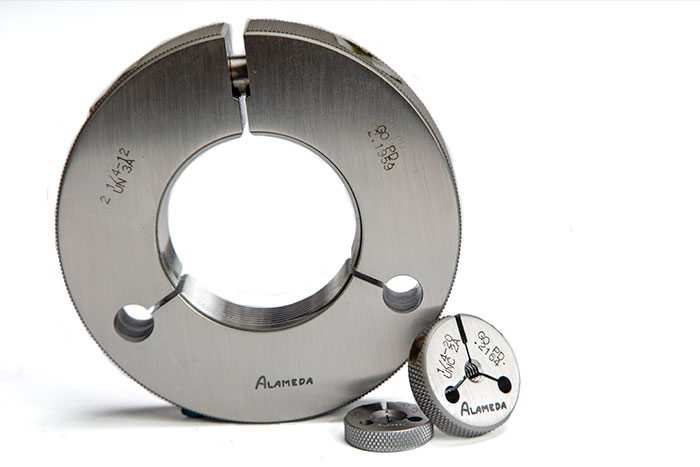
NPTF (Dryseal) 3 and 6 Step Gages

If L1 ring goes on to the maximum notch

The L2 ring must also go on to the maximum notch within 1/2 turn

and the six step plain ring must go between the MX and MXT notch.

If L1 ring goes on to the basic notch

The L2 ring must also go on to the basic notch within 1/2 turn

and the six step plain ring must go between the B and BT notch.

If L1 ring goes on to the minimum notch

The L2 ring must also go on to the minimum notch within 1/2 turn

and the six step plain ring must go between the MN and MNT notch.
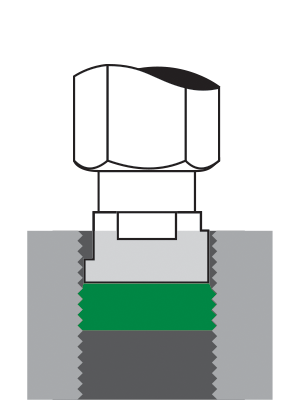
If L1 plug goes in to the maximum notch
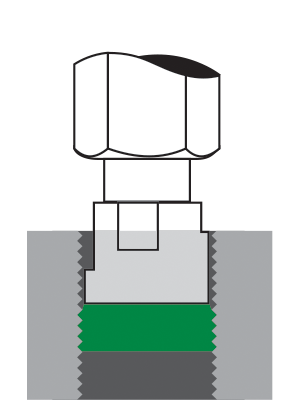
The L3 plug must also go in to the maximum notch within 1/2 turn

and the six step plain plug must go between the MX and MXT notch.

If L1 plug goes in to the basic notch
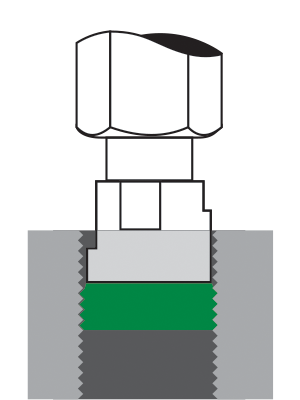
The L3 plug must also go in to the basic notch within 1/2 turn
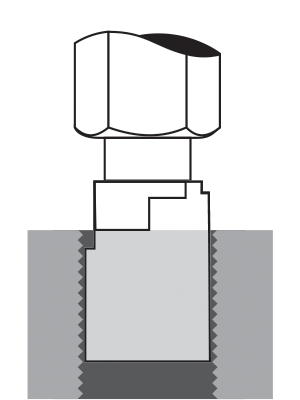
and the six step plain plug must go between the B and BT notch.
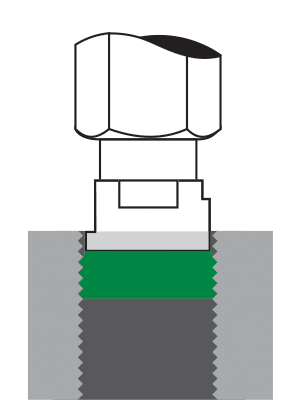
If L1 plug goes in to the minimum notch

The L3 plug must also go in to the minimum notch within 1/2 turn

and the six step plain plug must go between the MN and MNT notch.



